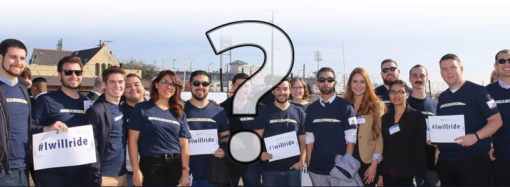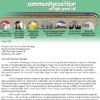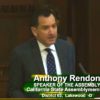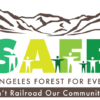Things are heating up and not in a good way for the high-speed rail Authority. Its latest report issued to the Legislature May 1, 2019 clearly shows it will not be building high-speed rail anytime soon, if ever.
Instead, it is building a conventional rail section according to Joe Hedges, COO of the Rail Authority. He expects to deliver “plain rail, simple rail” by December 2022. High-Speed Rail may not operate until 2030 according to Hedges. See NBC’s Investigative Unit video around the 3 min 51 sec. mark for Hedges complete commentary. This was first aired April 29, 2019. Note the May 1st Authority Report shows approximately a 2028 start date for service. This is on page 68 and continues on with their plans for the Central Valley Service through page 71.
However according to NBC’s report the December 2022 federal guideline is unlikely to be achieved, “… the Authority is building at a rate three times slower than needed to avoid violating their agreement with the Federal Rail Administration. According to a November state audit, “If the Authority continues to work at its current rate, it will not complete all anticipated work until 2027.”
Remember the original finish date for the entire project was first projected for 2020. System wide environmental work was originally scheduled for 2011/2012 and except for parts of the Central Valley they still aren’t complete. The Authority doesn’t have a good track record for making deadlines.
Prop 1A compliance:
This is not what Californians voted for; nor does it accord with 2008’s Prop 1A. What was originally required was that each section built be capable of running high-speed trains and each section be financially self-sufficient. When all sections were built, they could be joined to run a high-speed rail system. As attested to by two Authority Chairmen and its Peer Review Group, the Central Valley section alone does not have the ridership to accomplish financial independence, Prop 1A’s keystone promise. Yet the Authority designated the Central Valley as a usable segment in their funding plan in 2016 on page 69-70. On page 66 the report says,
“A more detailed and specific ridership model will be developed to further evaluate this integrated service network to review ridership and revenue forecasts based on the more detailed service concept. Until this new model has been developed, the existing State model will continue to be used.”
It appears this model was developed for the state by Cambridge Systematics in 2008.
The Backup Plan
In August 2010 as part of the cooperative agreement the Rail Authority and the Federal government established a back-up plan with independent utility, in case the high-speed rail project’s Phase 1 (LA-SF) could not be completed. See the LA Times article describing this in 2011.
What is being built today seems to be essentially the backup plan designed for conventional rail. This could be an attempt against the federal government taking back the ARRA funds that were spent by September 2017. Therein lies the rub; there is no independent utility provisions in Prop 1A; only the usable segment provision requiring financial sustainability. Without connecting to either Northern California’s Silicon Valley or Southern California, there is insufficient ridership to be financially sustainable and the costs of tunneling to either destination are astronomical.
In the Sacramento Bee article dated May 1, 2019, it demonstrates how the Rail Authority might get around some of the Prop 1A requirements.
“The report indicates that rather than the rail authority subsidizing the train operations, the agency could work out an arrangement with the state Transportation Agency and the San Joaquin Joint Powers Authority to lease the high-speed train tracks once testing of the rail line is completed until the system is ready to run trains to the Silicon Valley. The San Joaquin Joint Powers Authority runs Amtrak’s San Joaquin trains through the Valley, and those operations are subsidized by the state Transportation Agency.”
If this is done, it seems like a shell game, a technical work around the Prop 1A requirements but in the end, who’s paying, the state.
Promises to the public
2008’s voting public was promised no new taxes and a system that included both substantial federal government and private investor participation. Neither materialized. The state continues to use valuable cap-and-trade dollars to finance the project, funds that were supposed to be the back-up plan now have become the only source of income.
Talk of using other state monies, taxing soft drink, gasoline or other new taxes is just fiscally irresponsible. Here is a great summary, a reminder of some of the things the public was promised. In this article by Joel Fox, he compares Prop 1A pro vs. con arguments as they appeared on the ballot back in 2008.
The Central Valley people
There are still hundreds of people still in the midst of negotiations with the High-Speed Rail Authority to sell their farm lands, homes and businesses. This is a very tough situation to be in since it is possible that the plug could be pulled on the project. But there is something to remember especially for those in a precarious position. August 2016 Senator Andy Vidak authored SB 940 which passed. It requires the state to give the former property owners a 30-day’s notice before putting properties up for sale. This gives owners a chance to buy their property back. This might help those who have not moved forward yet and still have the funding to reclaim their property if the project is halted.
The state has invested over $5,000,000,000 ($5 billion) with about $75 billion to go at a minimum to complete Los Angeles to San Francisco (Phase 1). There is an old adage which states that “if you find yourself in a hole, stop digging.” Figure out what the cancellation clauses in contracts will cost and just stop the project.
Other interesting links:
Listen to the second short video of the latest NBC Investigative Team findings regarding the project: NBC Report on CA HSR Published May 3, 2019
Lawsuit against the Authority heating up: The time has come for the courts to reassess the project looking at the facts and promises in Prop 1A. https://www.fresnobee.com/news/local/article229992974.html





